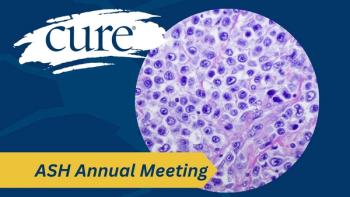
Increased Incidence of Colorectal Cancer Is Underestimated For Some Patients, Study Finds
New research examining Surveillance, Epidemiology, and End Results (SEER) program data found that relying solely on this data may lead to underestimating the rising rate of colorectal cancer in patients aged 49 and 50.
A large increase in the incidence of early-onset colorectal cancer in patients between 49 and 50 years old is consistent with previously undetected colorectal cancers diagnosed prior to age 50, but is not accounted for in observed Surveillance, Epidemiology, and End Results (SEER) incidence rates. Therefore, using SEER data alone to determine earlier screening could underestimate the number of diagnoses that could be prevented, according to research from JAMA Network Open.
The SEER program was created by the National Cancer Institute in an effort to reduce the cancer burden in the U.S. by providing information on cancer incidences and survival rates. Data from this program helps to create important screening guidelines, but researchers believed it was underestimating the amount of colorectal cancer in patients younger than 50 compared to those who are older because colorectal cancer screenings typically do not occur until 50.
Currently, while early-onset colorectal cancer rates are rising, guideline controversy surrounds whether or not patients should be screened at 45 or 50 years old. In 2018, the American Cancer Society lowered the age of average-risk screening to 45, while others continued to recommend age 50.
“Because many (patients with) colorectal cancer are asymptomatic, observed incidence rates of (early-onset colorectal cancer) in the Surveillance, Epidemiology, and End Results (SEER) registries do not reflect preclinical colorectal cancer case burdens in younger patients,” the researchers explained. “And we would expect to see some degree of colorectal cancer incidence increase from 49 to 50 years of age, owing to screening uptake and diagnosis of preexisting (colorectal cancer diagnosis) that may have been clinically undetected.”
Researchers looked at data from the SEER 18 registries, that represent 28% of the U.S. population, and conducted an analysis of colorectal cancer incidence rates from January 1, 2000, to December 31, 2015, in one-year age increments from 30-60 years old. This amounted to a total of 170,434 cases of colorectal cancer examined in 165,160 patients, of which 55.9% were men.
Between the ages of 49 and 50, researchers found a 46.1% increase of colorectal cancer incidences in for all U.S. regions, and in men and women among both white and black populations. Researchers found this rate increase to also be significantly higher than any one-year age increase.
“It is likely that the steep increase between ages of 49 and 50 years predominantly reflects increased incidence owing to screening detection as opposed to advancing age,” the researchers wrote. “This increase was seen across geographical regions, in men and women, in white and black populations, and in colon and rectal cancer. Screening at 50 years of age unifies these disparate populations.”
The researchers also explained that 92.9% of the cases were invasive and required surgery, which, in their opinion, could be associated with cases that had been missed due to delayed screening. Some arguments against decreasing the screening age note that incidence among patients between 45 to 49 years is considered relatively low, but researchers found this was not the case.
“Our findings, however, suggest the presence of a high case burden of undetected preclinical (early-onset colorectal cancer) in younger patients, not reflected in observed SEER incidence rates,” the researchers explained. “Hence, the overall underlying early-onset colorectal cancer burden (combined detected and undetected cases) for individuals aged 45 to 49 years is underestimated and may approach that of individuals in their early 50s.”
The researchers are calling for further studies to detail the proportion of colorectal cancer cases diagnosed at age 50 through a screening or diagnostic test, as well as modeling studies incorporating the increased incidence rates in patients between 49 and 50 years old.





